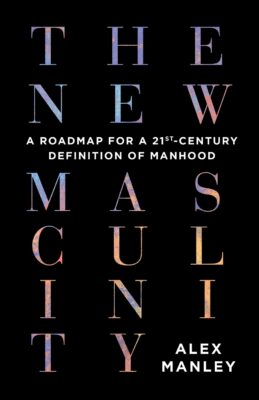In the time it took me to read Alex Manley’s book, The New Masculinity: A Roadmap for a 21st-Century Definition of Manhood, more than fifty mass shootings occurred in the United States, almost all of them committed by men. Mass shootings are undoubtedly a devastating symptom of a generational crisis. Some men feel excluded from the traditional markers of manhood: stable jobs, social status, and meaningful adult relationships. Not all men use guns to voice their frustrations, but there is little doubt that many men feel unmoored. What can help them navigate a world that is not only fearful of them, but is also hostile toward them, for their very maleness?
Manley (yes, that’s their real name), who is non-binary, charts a new course for men. “The enemy isn’t men – it’s the toxicity that exists within transitional masculinity,” they argue. And they are frank that the crisis of masculinity took many men off guard: “Masculinity isn’t as popular today as it used to be. It snuck up on us. There wasn’t a big ceremony, like sending smoke into the sky to signify they’ve chosen a new pope.” Arguably, #MeToo was that smoke signal, a fact Manley does not neglect to address.
The New Masculinity ECW Press
A Roadmap for a 21st-Century Definition of Manhood
Alex Manley
$24.95
paper
264pp
9781770416895
As clickbait headlines attract reader attention, in book form, simple-steps-to-success is a time-tested model in the self-help genre, extending straightforward answers to complex issues. Manley employs this technique, but they toy a little with the paradigm, offering up thirteen chapters about what real men don’t do – albeit things they could and should do if they want to remake themselves. For example: Do the dishes (fight “the male urge to soak a pan until someone else washes it”), listen to pop music (and more generally expand their cultural palate), see a therapist, and engage in more vulnerable sex (a real man would never fake an orgasm, right?). But will men follow the program?
In this format, the spectre of Jordan B. Peterson’s 12 Rules for Life looms – and Manley faces up to that. Thankfully, there are no rules here, nor Peterson-like stern directives, but rather signposts on the road to unlearning toxic masculinity. It’s deeply researched, and Manley’s copious footnotes demonstrate just how much thought has been devoted to the decades-long project of making a new manhood. Yet the writing is a tad academic for the teenagers and young men who Manley hopes will read this book. The humorous and vulnerable personal stories about Manley’s own bumpy path to adulthood, and their unpacking of the traditional manhood tropes, are welcome interludes.
Manley leaves the revelation of their coming-out as non-binary until the very end. While this book was intentionally written for a young cis male audience, leading with this could have offered an opportunity for some readers to learn more about living outside the cisgender binary and paved the way for an inclusive conversation with women, genderqueer, and BIPOC communities.
That said, there is a universal takeaway: It’s never too late to come of age in a new era with new expectations. At its heart, The New Masculinity is a wayfinding text from the Millennials to the Gen Z-ers who must forge a new path, gain a new vocabulary, and take the initiative to get comfortable with their vulnerability. In the essential work of expanding the definition of manhood, Manley is one guiding force.mRb






0 Comments